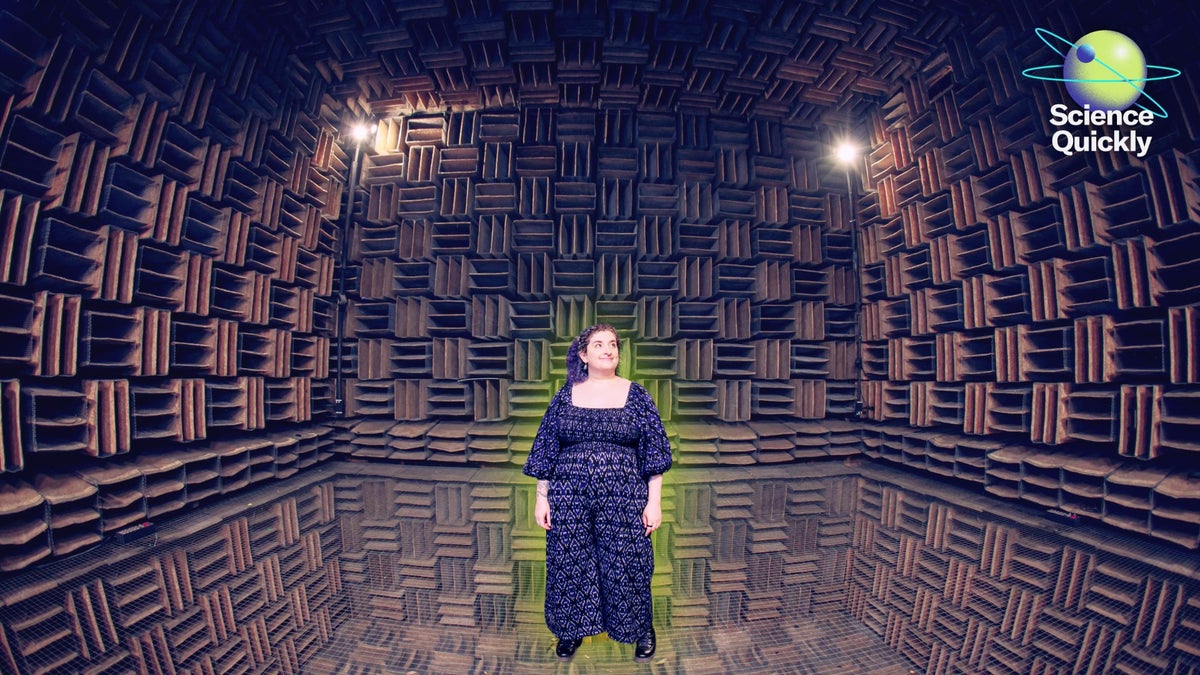
"Kelso Harper: [Laughs.] Rachel Feltman: [Laughs.] Yeah. Cluett: Pretty loud. Feltman: Yeah, pretty loud [laughs]. Cluett: But in this room there's none of that. So you're gonna hear it as a very sharp sound that just disappears completely. [Pops a balloon inside an anechoic chamber, making a sharp noise that dissipates immediately.] Feltman: Ooh! Cluett: Welcome to the anechoic chamber. Watch your step."
"Feltman: Whoa [laughs]. Wow, it is already super quiet in here [laughs]. Cluett: And it's gonna get even more quiet when we close the door. Feltman: Cool. Cluett: [Walks to the chamber entrance and closes the outer and inner doors.] How's that? Feltman: It did get a lot more quiet, yeah [laughs]."
"And you may notice if you're listening to this, or if you're watching it, that there's some interesting stuff going on with the sound. Seth, would you tell us more about why that is? Cluett: Yeah, so we are in the historic anechoic chamber at Bell Labs. It is a room that absorbs 99.999 percent of sound-wave propagation and eliminates sound from the outside almost entirely. It is anechoic, meaning it lacks echo."
A balloon pop in a normal room produces a booming, room-expanding sound. Inside an anechoic chamber the same pop becomes a sharp click that rapidly disappears. The chamber absorbs 99.999 percent of sound-wave propagation and blocks outside noise almost entirely. The surfaces convert transient acoustic energy so echoes are eliminated and sounds do not sustain. Closing inner and outer doors increases the silence further. The chamber yields one of the quietest acoustic environments, changing how familiar noises are perceived and revealing the role of room acoustics in shaping sound character and duration.
Read at www.scientificamerican.com
Unable to calculate read time
Collection
[
|
...
]